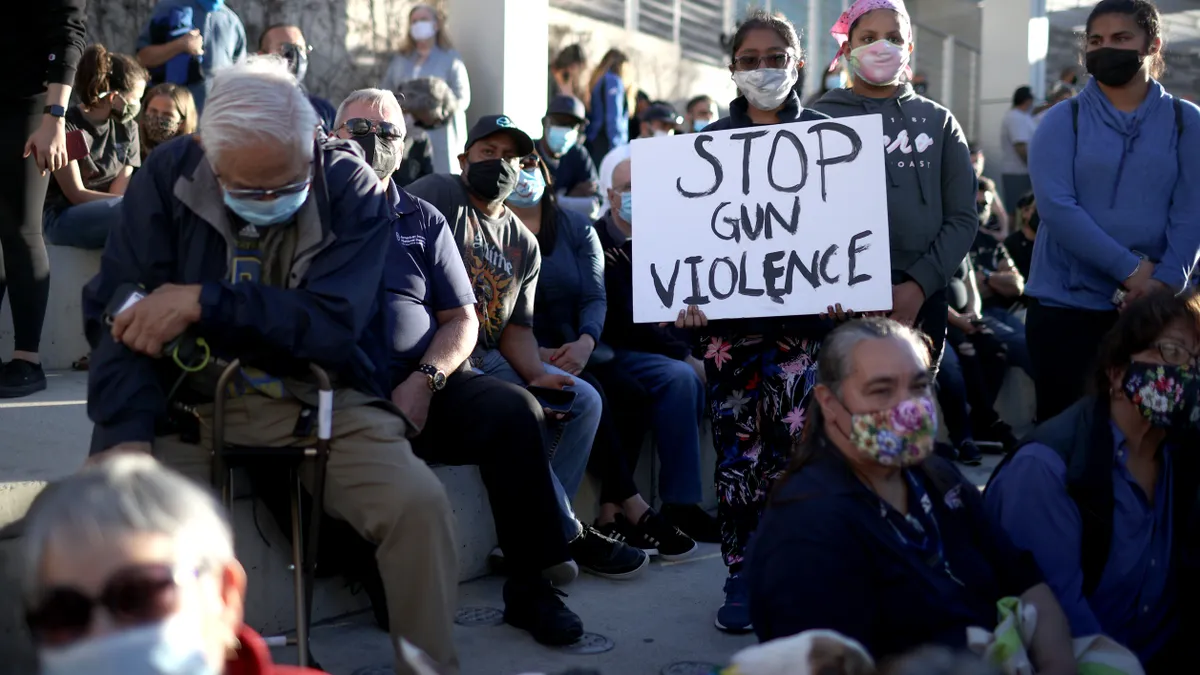California employers have less than nine months to comply with the state’s new law requiring workplace violence prevention plans. The law, which was signed by Gov. Gavin Newsom Sept. 30, goes into effect July 1, 2024.
Under SB 553, most employers will need to maintain logs on violent incidents, as well as provide training to workers on reporting incidents. The bill also permits collective bargaining representatives to seek temporary restraining orders for workers who were victims of violence or threats of violence.
The law is the first of its kind in the country to establish “general industry workplace violence prevention safety requirements,” according to representatives from labor and employment firm Littler, and closely mirrors similar legislation Cal/OSHA implemented in April 2017 for healthcare employers.
“California is the first state to require workplace violence prevention. What we've seen is California is often a bellwether for other states, so where they go legislatively, other states often follow,” Marisa Randazzo, executive director of threat management at Ontic, a security software company, told HR Dive.
There might not be as much legwork involved for California employers as they might think, Randazzo explained. California law already requires employers to maintain injury and illness prevention plans, and the new workplace violence prevention plans can be added to those existing documents.
The new law requires employers to:
- Designate someone to be responsible for the workplace violence prevention plan
- Establish procedures to prevent and respond to workplace violence
- Keep records of all threats and incidents of workplace violence, as well as responses to those threats and incidents
- Regularly train workers on how to report workplace violence concerns
In keeping logs of perceived threats and incidents, employers will better be able to track trends and identify more potential risks, Randazzo said. They’ll be able to see, for example, if more problems occur in certain locations or within specific departments and be able to make changes to address issues, like adding lighting or enhanced security, she said.
“California employers now have to keep track of violence and threats right in their workplace. It's so important from a prevention standpoint; it's not just a matter of complying with the law. The more information that employers can capture, the better job they can do long term with keeping their workplaces safe for everybody,” Randazzo said.
State Senator Dave Cortese, D-San Jose, the bill’s author, introduced the bill in response to a 2021 shooting at the Santa Clara Valley Transportation Authority railyard in San Jose that killed 10 people, including the shooter.
“On that horrible day, we quickly realized how safety protocols can and must be enhanced. In the following days and months, more solutions for preventing workplace violence emerged,” Cortese said in a statement released after the bill was signed into law in September. “SB 553 is the result of a months-long negotiation between workers, businesses and Cal/OSHA. This groundbreaking law will help workers and employers establish a plan for the types of workplace violence that are on the rise.”
Co-workers often are the first to notice problematic behavior, said Randazzo, who previously worked as a chief research psychologist for the U.S. Secret Service. They may notice changes in a friend at work and become worried but don’t want to get their friend in trouble by reporting them, she said.
“When we dissect incidents of workplace violence that have occurred, we find out typically that a lot of people had information, but they didn’t know what to do with it. This legislation provides direction on what to do with that, and it can and should be a low bar for reporting,” Randazzo said.
Violent events often are preceded by “red flag behavior” by people who are suicidal or don’t care anymore what happens to themselves, Randazzo said. And the more employers know, the more they can do to figure out what’s driving that behavior or inclination toward violence and can try to help solve those underlying problems, she said.
“It is quite possible to prevent workplace violence. And oftentimes, it's a matter of getting at why this person is feeling like this is their best option, the only option they have left — and [whether you] can … redirect them,” Randazzo said.





















